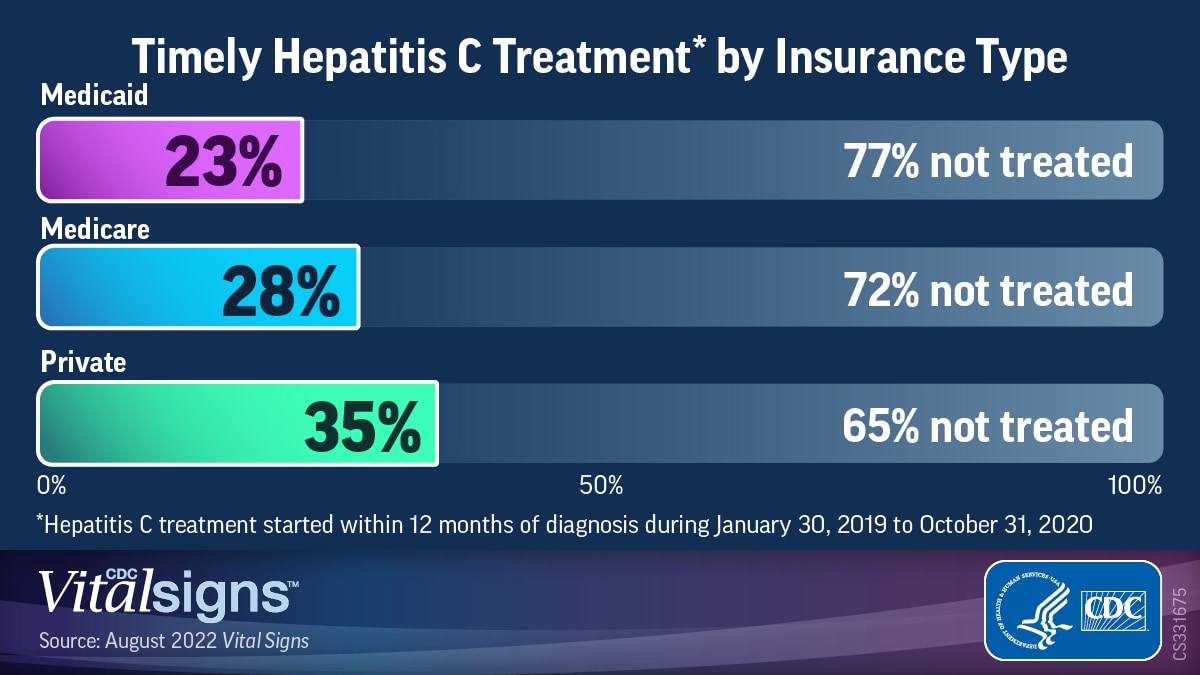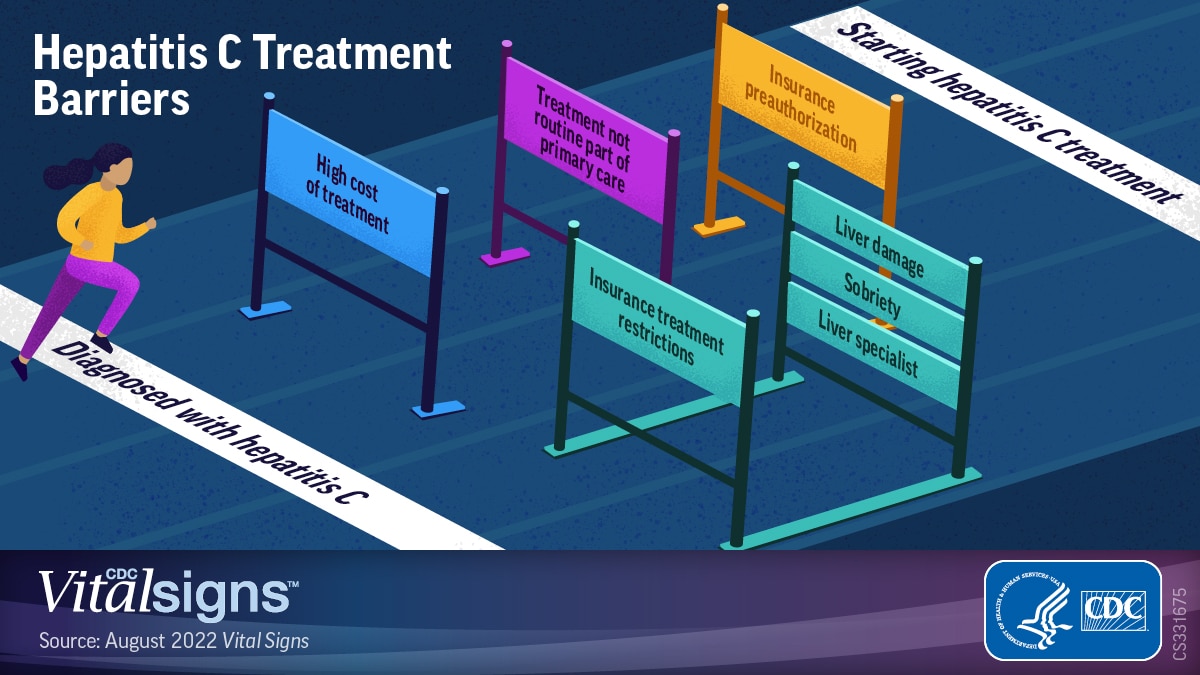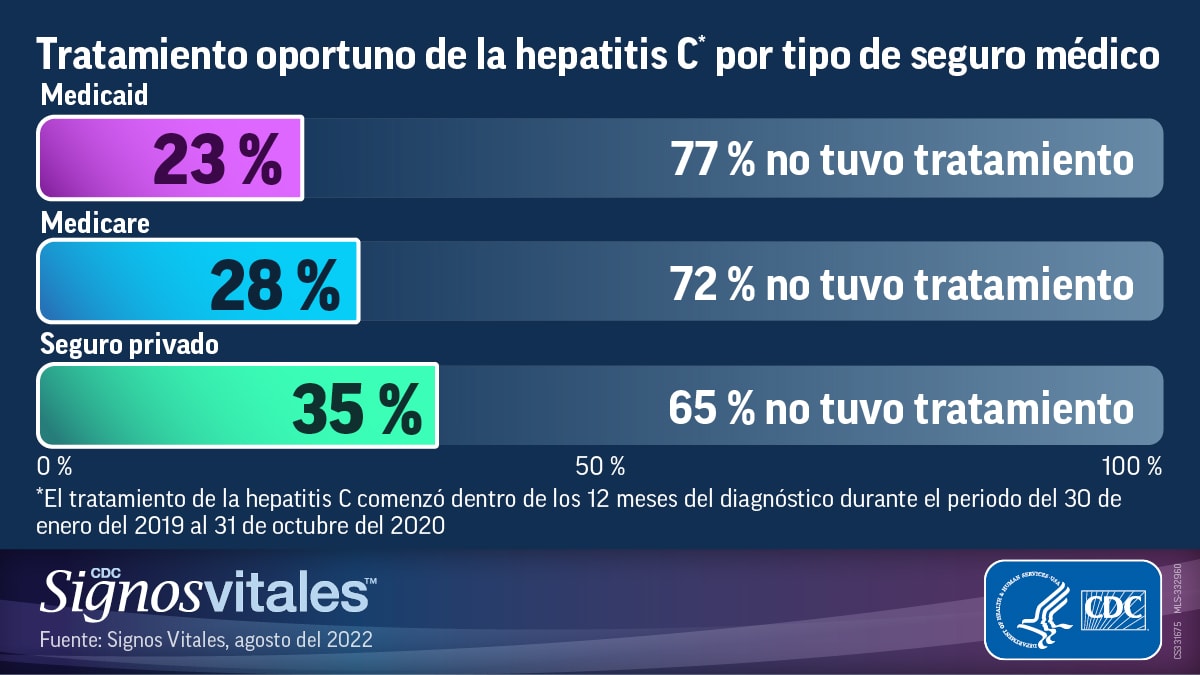New CDC Data Reveal Less Than a Third of People Diagnosed with Hepatitis C Receive Timely Treatment
August 9, 2022 – Large gaps in hep C treatment persist nearly a decade after a highly effective cure for this deadly infection was approved
A new CDC Vital Signs report finds that too few people diagnosed with hepatitis C are being treated, even though hepatitis C is largely curable. According to CDC’s estimates, overall, less than 1 in 3 people with health insurance receive direct-acting antiviral treatment for hepatitis C within a year of diagnosis. Treatment is even lower among people who are Medicaid recipients, those living in states with Medicaid treatment restrictions, and among adults under the age of 40.
-
- Press Release: New CDC Data Reveal Less Than a Third of People Diagnosed with Hepatitis C Receive Timely Treatment for the Deadly, yet Curable Infection
- Comunicado de Prensa: Nuevos datos de los CDC revelan que menos de un tercio de las personas con un diagnóstico de hepatitis C reciben tratamiento oportuno para la mortal, aunque curable, infección
- Vital Signs: Too Few People Treated for Hepatitis C
- Full Report: Hepatitis C Treatment Among Insured Adults — United States, 2019–2020
Graphics | Gráficos
These high-resolution, public domain images are ready to download and print in your publication. Click on a graphic to see it in high-resolution. These images are in the public domain and are thus free of any copyright restrictions. As a matter of courtesy, we ask that the content provider be credited and notified of any public or private usage of an image.
Less than 1 in 3 people with health insurance get direct-acting antiviral (DAA) treatment for hepatitis C within a year of diagnosis. Treatment is lowest among patients in state-administered Medicaid plans, with less than 1 in 4 Medicaid recipients (23%) being treated within a year of diagnosis.
Currently, people with hepatitis C face too many barriers to accessing life-saving treatment.
En general, menos de 1 de cada 3 personas con seguro médico recibe tratamiento antiviral de acción directa (DAA, por sus siglas en inglés) para la hepatitis C dentro del año después del diagnóstico. El menor tratamiento ocurre entre los pacientes en planes de Medicaid administrados a nivel de estado, con menos de 1 de cada 4 beneficiarios de Medicaid (23 %) siendo tratados dentro del año después del diagnóstico.




